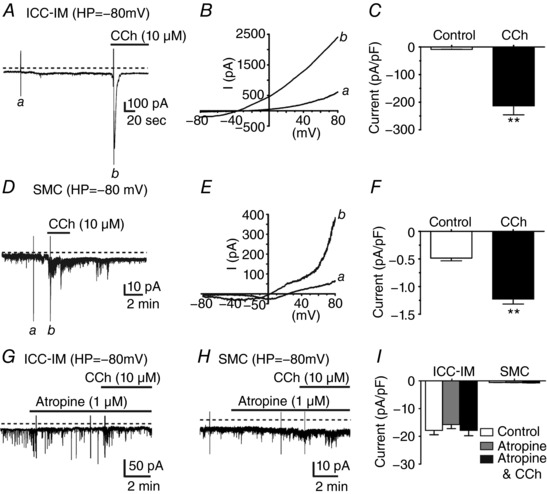Figure 3. Carbachol activates a large inward conductance in ICC‐IM and a small noisy conductance in fundus SMCs.

A, at a holding potential (HP) of –80 mV with a Cs+‐rich pipette solution and = –40 mV, ICC‐IM displayed a sustained inward conductance. Addition of carbachol (CCh, 10 μm) activated a large amplitude transient inward current in ICC‐IM. B, voltage ramp protocols reveal the current activated by CCh. Current in response to voltage ramp from −80 to +80 mV before (a) and after CCh (b), at the time points indicated in (A). After CCh, voltage ramps reversed at around –40 mV. C, summary of the normalized current density activated by CCh. CCh evoked inward current averaging −213.2 ± 32.5 pA pF–1 in ICC‐IM (n = 8; ** P < 0.01). D–F, in SMCs, CCh (10 μm) activated a small noisy inward conductance in fundus SMCs. D, under conditions similar to those performed on ICC‐IM (HP = –80 mV), SMCs had smaller holding currents (Da) and addition of CCh (10 μm) (Db) activated small noisy currents. E, voltage ramp protocols performed before (a) and after CCh (b), at the time points indicated in (D). Ramps in the presence of CCh reversed at ∼0 mV. F, normalized current density activated by CCh in SMCs averaged −1.2 ± 0.1 pA pF–1 (n = 7; ** P < 0.01). G, atropine inhibited inward currents activated by CCh in ICC‐IM but not STICs, H, atropine also inhibited activation of noisy currents in SMCs. I, summary showing that atropine blocked CCh responses in both ICC‐IM and SMCs (n = 8 for ICC‐IM and n = 7 for SMCs; P > 0.05 for both cell types).
